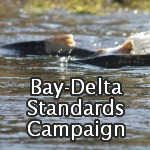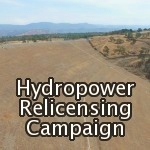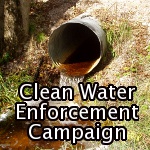PG&E operators on the North Fork Feather River have destroyed virtually all of 2011’s viable frog eggs on the NF Feather River below the Poe hydroelectric dam.
On June 30, 2011, PG&E operators reduced the flow in the NF Feather below Poe Dam to about 114 cubic feet per second (cfs). In the last half of June, flows on the Poe reach had been reaching daily highs of about 2000 cfs. During June, foothill yellow-legged frogs had bred and deposited eggs in the river. When PG&E operators dropped the flows on June 30, the frog egg masses were stranded out of the water, destroying any chance for the eggs to become tadpoles.
CSPA and American Whitewater became aware of this occurrence on July 15, 2011. During the meeting in which this information was reported, CSPA and AW immediately called on the representative of the State Water Resources Control Board to use its Clean Water Act authority to protect frogs from future similar mass mortalities. In a July 29 filing with the Federal Energy Regulatory Commission (FERC), CSPA and American Whitewater called on FERC to require a flow regime for the Poe Project that protects frogs. In the same filing, CSPA and AW also called on PG&E to immediately institute management measures and protocols to avoid future similar incidents.
PG&E has made a preliminary response to CSPA and AW that promises an investigation and the development of management measures.
Protection of frogs is not explicitly part of CSPA’s mission. However, a gradual reduction in flows as snowmelt subsides (which would protect frogs) also benefits aquatic insects and fish. Moreover, hydroelectric operators should simply not be allowed to kill the annual production of critters in rivers.
More directly related to CSPA’s mission, foothill yellow-legged frogs are presently considered a species of special concern by the Forest Service and the California Department of Fish and Game. If the actions of water users push these frogs to be listed under the Endangered Species Act, it will become much harder to advocate for management to protect and enhance trout and other fish populations.









